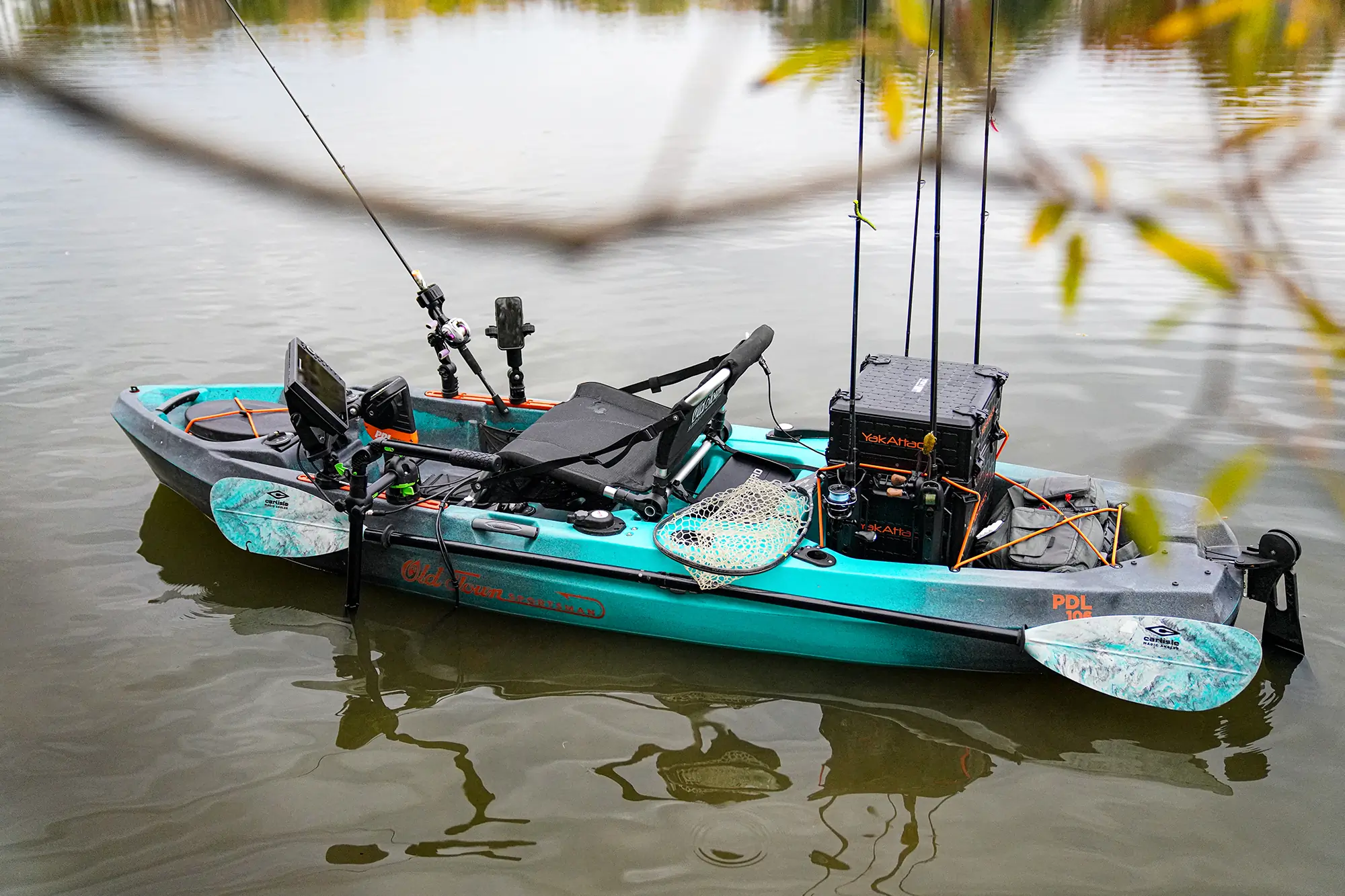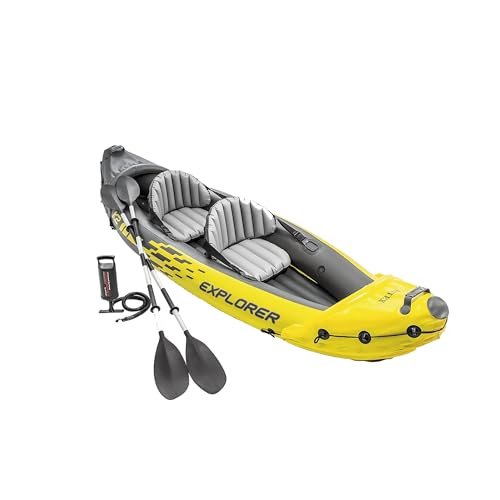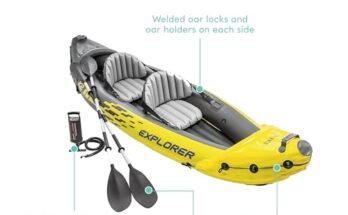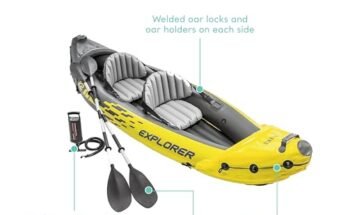Are you thinking about trying kayak fishing but aren’t sure if it’s really worth your time and effort? You might be wondering if it’s fun, safe, or even effective for catching fish.
Maybe you want to know how it compares to traditional fishing or what you need to get started. This article will help you decide if kayak fishing is the right choice for you. By the end, you’ll have a clear idea of what to expect and whether it can add real value to your fishing adventures.
Keep reading to find out!
Why Choose Kayak Fishing
Kayak fishing is a popular way to enjoy the water and catch fish. It offers many benefits for people who love fishing.
This type of fishing lets you explore nature up close. It is easy to learn and fun for all skill levels.
Affordability Compared To Boats
Kayaks cost much less than motorboats. You can buy a kayak for a fraction of the price of a small boat.
Kayaks also have low maintenance costs. You do not need fuel or expensive repairs.
- Lower initial cost
- No fuel expenses
- Minimal maintenance
- Easy storage and transport
Access To Remote Fishing Spots
Kayaks are small and light, so you can reach places boats cannot. This helps you find quiet fishing spots.
You can paddle into shallow water and narrow areas. This gives you more options to catch fish.
- Reach shallow waters
- Explore narrow channels
- Fish in less crowded areas
- Easy to launch from shore
Eco-friendly Fishing Option
Kayaks do not use engines, so they do not pollute the water or air. This makes them good for the environment.
Paddling is quiet and does not disturb fish or wildlife. You can enjoy nature while protecting it.
- No fuel emissions
- Quiet on the water
- Less disturbance to fish
- Supports wildlife conservation

Essential Benefits Of Kayak Fishing
Kayak fishing blends paddling and angling into one activity. It offers a unique way to enjoy nature and catch fish.
This method brings many benefits that improve your fishing trips and health. You can also fish quietly without disturbing the water.
Improved Fishing Experience
Fishing from a kayak lets you reach spots big boats cannot. You can explore shallow waters, coves, and narrow channels.
- Easier access to hidden fishing areas
- Better control over your position on the water
- Closer connection to the natural environment
- Ability to move quietly without scaring fish
Physical Health Advantages
Paddling a kayak is a good workout. It strengthens your arms, shoulders, and core muscles.
| Health Benefit | Details |
| Cardio Exercise | Improves heart health and stamina |
| Muscle Strength | Builds upper body and core muscles |
| Low Impact | Easy on joints compared to running |
| Stress Relief | Calms the mind with natural surroundings |
Quiet And Stealthy Approach
Kayak fishing lets you move silently on water. This reduces noise that can scare fish away.
Key reasons kayaks are stealthy:
- No noisy engines
- Soft paddles cause less splash
- Low profile keeps you hidden
- Easy to stop and stay still
Picking The Right Kayak
Choosing the right kayak is important for a good fishing experience. Different kayaks suit different fishing styles and waters.
Knowing what type of kayak fits your needs helps you fish comfortably and safely.
Types Of Fishing Kayaks
There are many types of kayaks made for fishing. Sit-on-top kayaks are popular for their stability and easy access.
Sit-in kayaks offer more protection from water and are better for cold weather. Inflatable kayaks are easy to carry and store.
- Sit-on-top kayaks: stable, easy to use
- Sit-in kayaks: protect from water, good for cold
- Inflatable kayaks: lightweight, portable
- Pedal kayaks: hands-free fishing
- Tandem kayaks: fish with a partner
Key Features To Consider
Look for features that make fishing easier and safer. Stability is key so you can stand or move without tipping.
Storage space helps keep your fishing gear organized. Comfort matters for long trips, so check the seat and leg room.
- Stability for easy movement
- Ample storage compartments
- Comfortable seating
- Durable materials
- Easy to transport and launch
Budget-friendly Options
You can find fishing kayaks that fit smaller budgets. Look for used kayaks or models with basic features.
Simple sit-on-top kayaks often cost less and still offer good fishing options.
- Used kayaks save money
- Basic sit-on-top models are affordable
- Look for sales or discounts
- Focus on essential features only
Must-have Gear For Kayak Fishing
Kayak fishing is a fun way to enjoy nature and catch fish. Using the right gear keeps you safe and makes fishing easier.
This guide covers important equipment for safety, rod holders, and navigation tools.
Safety Equipment
Safety gear protects you from accidents and weather. Always prepare before heading out.
- Personal flotation device (PFD)
- Whistle or signal horn
- First aid kit
- Waterproof flashlight or headlamp
- Sun protection: hat, sunglasses, sunscreen
- Dry bags for keeping gear dry
Fishing Rod Holders And Storage
Organizing your fishing rods helps you fish more efficiently. Rod holders keep rods secure and hands-free.
| Gear | Purpose |
| Rod holder | Keeps rod steady and accessible |
| Tackle box | Stores bait, lures, and tools |
| Storage compartments | Holds extra gear and personal items |
| Anchor trolley | Helps stabilize kayak in water |
Navigation And Communication Tools
Knowing your location and being able to call for help is vital. Use these tools for safe trips.
- GPS device for location tracking
- Marine radio for communication
- Compass as a backup navigation tool
- Mobile phone in a waterproof case
Techniques To Boost Your Catch
Kayak fishing offers a unique and exciting way to catch fish. It allows you to reach places that are hard to access by larger boats. Here are some techniques to help you catch more fish from your kayak.
Casting Tips From A Kayak
Casting from a kayak is different than casting from the shore. You need to be mindful of your balance and surroundings. Practice makes perfect, so spend time learning how to cast effectively while seated.
- Use a sidearm cast to keep the rod low and avoid hitting the kayak.
- Adjust your body position for better accuracy and distance.
- Practice casting while seated to improve your technique over time.
Best Baits And Lures
Choosing the right bait and lures is crucial for kayak fishing. Different fish are attracted to different types of bait. Consider the water conditions and type of fish you are targeting when selecting your bait.
| Type of Fish | Best Bait |
| Bass | Soft plastic worms |
| Trout | Spinners |
| Panfish | Live worms |
Reading Water And Fish Behavior
Understanding water and fish behavior can greatly increase your catch. Look for areas with structure like rocks or fallen trees where fish might hide. Pay attention to water temperature and current, as these can affect where fish are located.
Safety Tips On The Water
Kayak fishing is exciting and peaceful. It combines fishing and nature. Safety is key when you are on the water.
Follow these tips to stay safe while enjoying kayak fishing. Always be prepared for any situation that may arise.
Wearing Life Jackets
Wearing a life jacket is important. It keeps you safe in case you fall into the water. Choose a jacket that fits well and is comfortable.
- Always wear a life jacket when on the water.
- Check that it is U.S. Coast Guard approved.
- Ensure it is the right size for your weight and height.
Weather Awareness
Check the weather before you go kayak fishing. Storms and high winds can be dangerous on the water. Be aware of sudden changes in weather.
- Monitor weather forecasts regularly.
- Avoid fishing during storms or high winds.
- Be prepared to head back if the weather worsens.
Emergency Preparedness
Be ready for emergencies. Bring a first aid kit and a communication device. Know basic survival skills and how to call for help.
- Carry a fully charged cell phone or radio.
- Keep a first aid kit in your kayak.
- Learn basic water rescue techniques.
Maintaining Your Kayak And Gear
Keeping your kayak and gear in good shape helps them last longer. Regular care makes every trip safer and more fun.
Simple actions after each use can protect your equipment from damage and wear. Let’s explore how to clean, store, and inspect your kayak and gear.
Cleaning After Use
Rinse your kayak with fresh water after every trip. Salt, dirt, and debris can harm the surface if left on too long.
Wipe down your paddle, life vest, and other gear too. This removes grime and prevents mold growth.
- Use a soft brush to scrub stubborn spots
- Avoid harsh chemicals that damage materials
- Dry everything completely before storage
Storage Best Practices
Store your kayak in a cool, dry place. Keep it out of direct sunlight to stop fading and cracking.
Use racks or straps to keep the kayak off the ground. This avoids pressure points and helps air flow around it.
- Store paddles and gear in a dry area
- Cover your kayak with a breathable cover
- Keep storage spots free of sharp objects
Routine Inspections
Check your kayak and gear before and after each use. Look for cracks, holes, or loose parts that need fixing.
Inspect straps, buckles, and seals. Replace worn items to keep your kayak safe and ready for the water.
- Look inside the hull for water leaks
- Test the paddle for cracks or splinters
- Check life vests for tears or broken clips

Common Challenges And Solutions
Kayak fishing is fun but comes with some challenges. Knowing how to handle them helps you enjoy your time on water. This guide covers common issues and ways to solve them.
These tips are easy to follow and help you stay safe and comfortable while fishing from your kayak.
Dealing With Wind And Currents
Wind and currents can push your kayak off course. This makes fishing hard and tiring. Use the right tools and skills to control your kayak and stay where you want.
- Choose a kayak with good tracking to go straight.
- Use a paddle leash to keep your paddle safe in strong wind.
- Wear a life jacket at all times for safety.
- Learn to read the water and weather before you go.
- Use an anchor or drift sock to hold position if needed.
Handling Limited Space
Kayaks have small decks. You must pack smart and keep gear tidy. This helps avoid clutter and keeps you balanced on the water.
| Tip | Explanation |
| Use Dry Bags | Keep gear dry and organized inside bags that fit your kayak. |
| Mount Rod Holders | Free your hands by placing rods in holders. |
| Carry Multi-Use Tools | Choose tools that serve more than one purpose to save space. |
| Limit Extra Items | Bring only what you need for the trip to avoid clutter. |
Avoiding Fatigue
Kayak fishing can be tiring, especially if you paddle for long times. It is important to manage your energy well to fish longer and stay safe.
Here are ways to reduce fatigue:
- Take short breaks to rest and hydrate.
- Use a comfortable seat with good back support.
- Paddle with smooth, steady strokes instead of fast, hard ones.
- Plan trips for calm weather and shorter distances.
- Stretch before and after paddling to keep muscles loose.

Frequently Asked Questions
Is Kayak Fishing Suitable For Beginners?
Yes, kayak fishing is beginner-friendly. It requires minimal gear and offers easy water access. Beginners can learn skills quickly with practice and safety measures.
What Are The Main Benefits Of Kayak Fishing?
Kayak fishing is cost-effective, eco-friendly, and offers better water access. It provides a quiet, immersive fishing experience close to nature.
How Safe Is Kayak Fishing In Different Water Conditions?
Kayak fishing is generally safe with proper gear and knowledge. Wearing a life jacket and checking weather improves safety in various water conditions.
Can Kayak Fishing Improve Fishing Success?
Yes, kayak fishing allows access to remote spots and shallow waters. This increases chances of catching diverse fish species effectively.
Conclusion
Kayak fishing offers a unique way to enjoy nature and catch fish. It lets you reach spots bigger boats cannot access. You get exercise and fresh air, making the experience healthy. Kayaks are affordable and easy to store compared to larger boats.
The quiet approach helps you get closer to fish. Some challenges exist, like weather and balance, but they add to the adventure. Overall, kayak fishing can be a fun and rewarding hobby. It suits many skill levels and budgets. Give it a try to see if it fits your fishing style.



